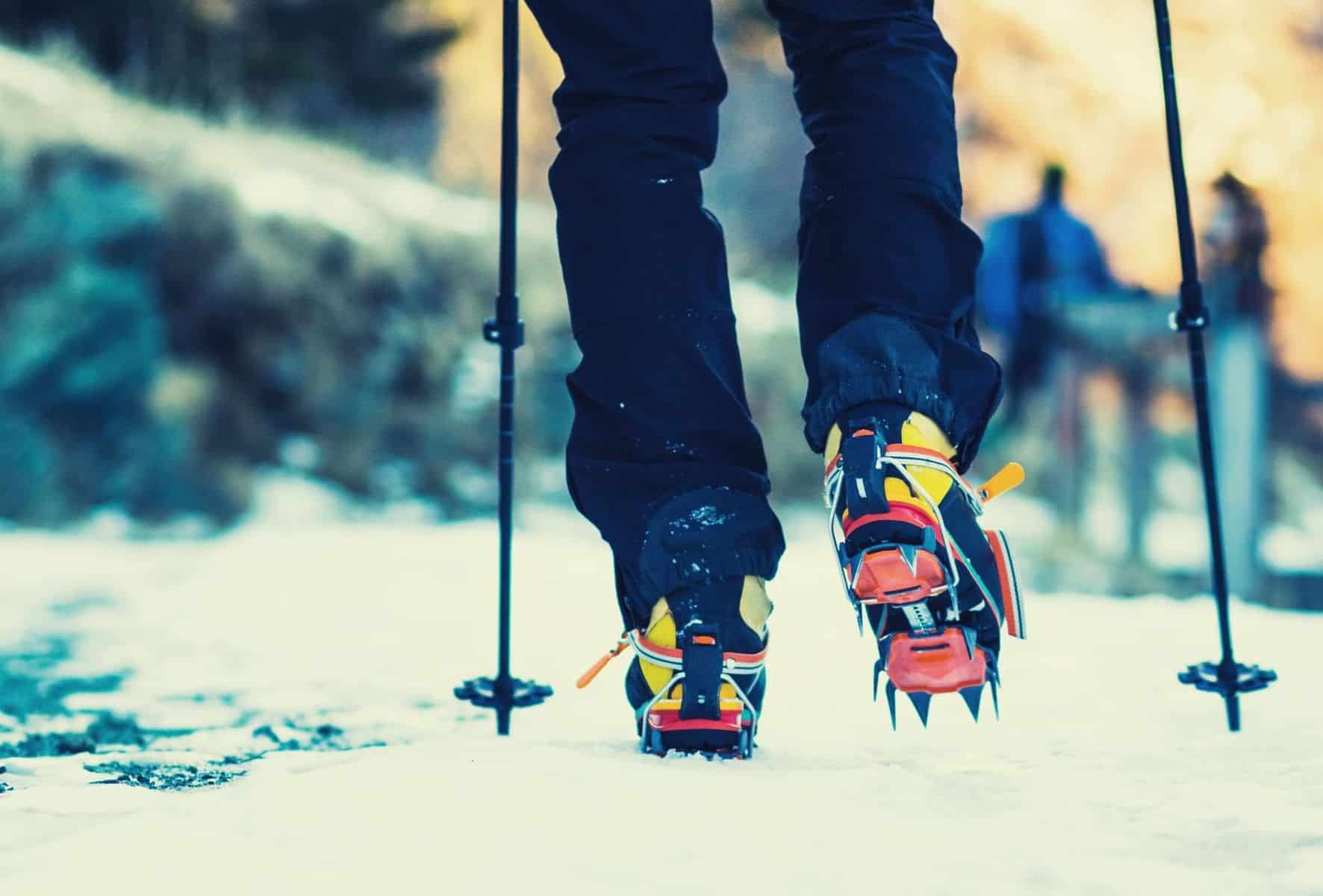Along with an ice axe, crampons are the most crucial piece of safety kit required for travel on ice and hard snow when hiking or mountaineering.
In this article, we’ll look at each of the main techniques for crampon use and explain when and where you should use them.
What you will need to follow this tutorial
To follow this tutorial, you’ll need the following:
- Your hiking boots
- A pair of compatible crampons
What is a Crampon?
A set of crampons are devices you attach to hiking or mountaineering boots that assist your footing on icy or snowy surfaces thanks to their multiple “spikes” (points/tines).
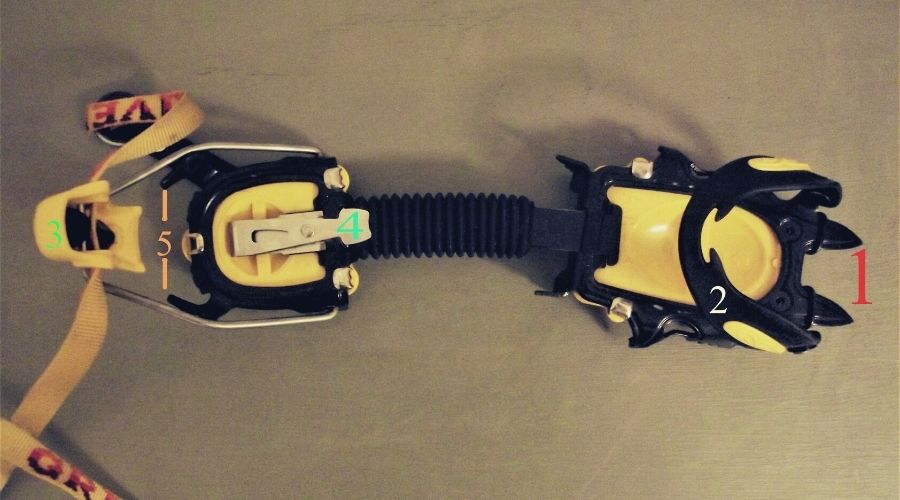
- Front points
- Toe bail
- Heel bail
- Adjustment lever
- Heel binding bars
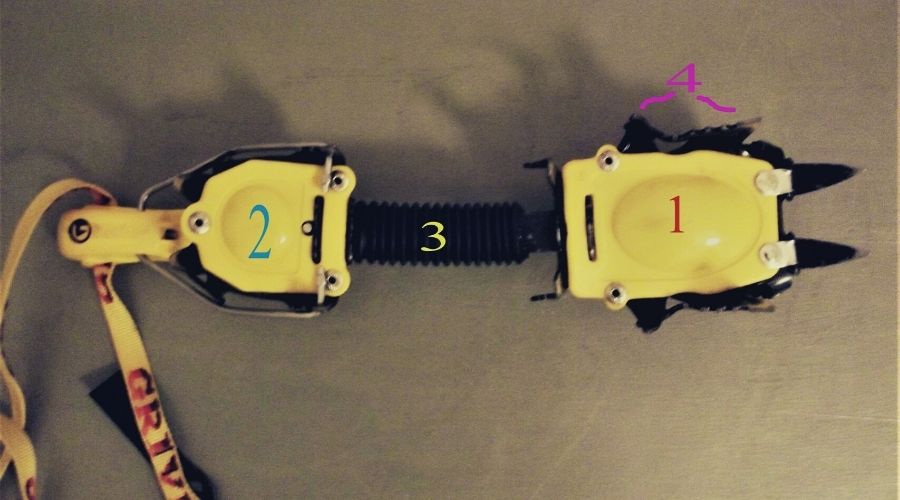
- Front anti-balling plate
- Rear anti-balling plate
- Sliding linking bar
- Points/tines
Every type of hiking boot is rated for crampon compatibility—this rating is denoted by the letters/figures B1, B2, and B3. Every boot type is compatible with a corresponding crampon number, meaning B1 boots pair with C1 crampons, B2 with C2s, and B3 with C3s.
- B1 boots are standard hiking boots with no toe or heel welt. C1 crampons attach with locking straps and are commonly known as “strap-ons.”
- B2 boots have either a toe or heel welt that attaches to C2 crampons with bails (locking bars or levers), or a combination of bails and straps. C2s have a semi-flexible design that makes them the most versatile crampons and suitable for everything from regular hiking to moderate ice climbing.
- C3 boots have both a toe and heel welt that attaches to C3 crampons with locking bails. C3s are fully rigid and used for graded mountaineering and ice-climbing.
How to Use Crampons Correctly: Step-by-Step Instructions
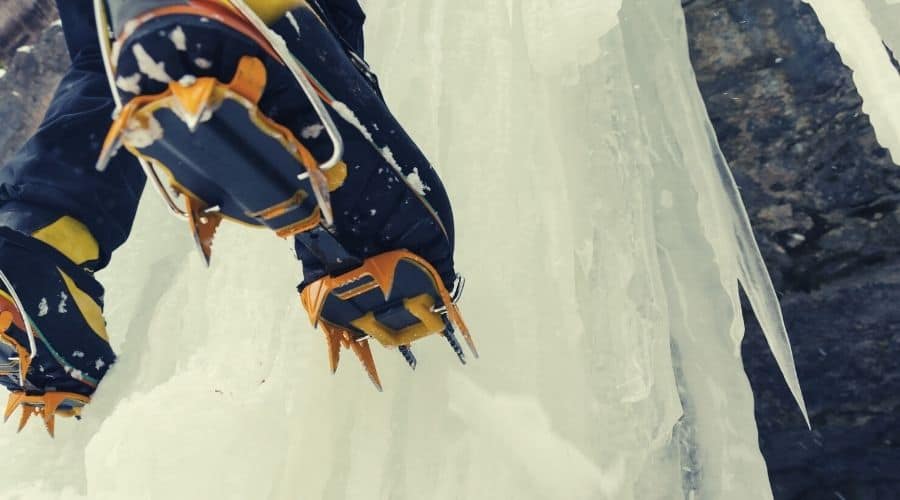
Step 1: Know When Crampons Are Needed
The time to put on your crampons on any hike comes in the case of the following scenarios:
- Your feet are frequently slipping in the snow or ice
- The snow is too firm to kick steps
- The angle of slope is too steep to progress safely
- Crossing a glacier
- When traveling on exposed trails with little scope for self-arrest with your ice axe in the event of a slip
Always try to anticipate when you’ll need to attach crampons—putting them on before you hit a steep, exposed, or otherwise treacherous patch of snow-covered or icy terrain is far easier and safer than doing so once on it.
Further reading: If you plan on traveling on rolling or flat terrain with deep snow, then using snowshoes might be a good alternative
Step 2: Putting Your Crampons On
How you attach your crampons to your boots will vary from model to model. However, we can make some more general observations about how to put crampons on correctly with varying crampon styles:
- Adjust the linking bar (the notched bar that connects the front and rear part of the crampon), so your toes and heel rest snugly against the toe and heel binding bars respectively
- Tighten the straps or clip on the bails – make sure the sole of your boot is placed firmly against the frame, and there’s no gap at the front or back of your boot
- Tuck away excess strap material to avoid snagging and make sure gaiter straps are on the outside of your foot
- Practice putting your crampons on at home until you can do so quickly and when wearing gloves
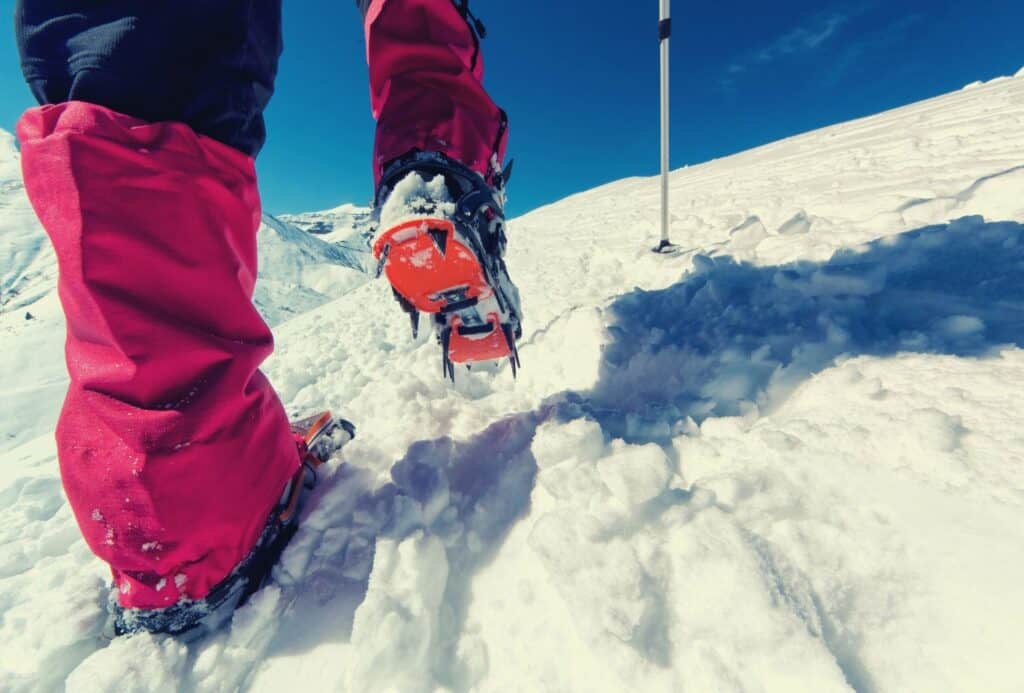
Step 3. The Different Walking Techniques for Using Crampons
The French Technique
Also known as the “flat-foot technique,” this involves planting feet flat on the snow so that all teeth (aka “tines”) come into contact with the snow at the same time. This usually requires locking the ankle at a slightly unnatural angle, depending on the aspect or angle of the slope.
When using this technique, the angle of the sole of your boot should mirror that of the slope.
The German Technique
Also known as “front-pointing,” you should employ this common mountaineering technique when climbing on steeper slopes of more than 40 degrees, or when the flat-footing technique makes it difficult to maintain your balance.
To use this method, kick the front points of your hiking crampon into the slope so that you create a small ledge or step in softer snow, or so the front points bite into harder snow or ice.
The American Technique
Also known as the “hybrid technique,” this involves using a combination of both the French and German techniques explained above.
To use this method, front-point with one foot by kicking it directly into the snow slope or ice. The second foot should be splayed outward at a 35 to 45-degree angle and placed flat in the snow so that all of the teeth are engaged.
Step 4: Descending Safely
We’ve all heard the often-cited warning that 80% of hiking and mountaineering accidents happen on the descent. This now appears to only be a slight exaggeration, no doubt significantly more injuries are sustained descending than ascending.
This is never more true than when hiking on snow-covered terrain, when the combined forces of gravity, tired limbs, and warmer, melted afternoon snow mean the likelihood of slips is significantly higher.
To descend safely in crampons:
- Make sure that your feet are always pointing in the direction of travel, i.e., toes pointing directly downhill when descending directly, pointing across the slope on a diagonal traverse
- On steeper slopes, keep your weight over your feet and plant your heels firmly in the snow with each step, even if this means the front tines (teeth) are not engaged
- Keep your knees slightly bent and your feet more than shoulder-width apart to improve balance and lower your center of gravity
Bonus Step: How to Avoid Balling
The accumulation of ice or hard, compact snow beneath your crampon is known as “balling.” This is perhaps the leading cause of accidents when wearing crampons.
Balling occurs when snow builds up on the sole of the crampon, forming a lump or ball of snow that prevents the tines from engaging (making contact with the snow/ice), thereby causing you to slip.
Most crampons use anti-balling plates (plastic inserts on the sole) designed to prevent the buildup of snow and ice. If these are not included on your crampons, be sure to bang the shaft of your ice axe against the side of your foot to dislodge snow frequently, and try to scuff the soles of your feet as you walk to minimize buildup.
Lastly, always ensure you’ve packed away your crampons safely to make sure your other gear and clothing don’t get torn or ripped.
Conclusion
Learning how to use crampons correctly (along with an ice axe) is essential for any hiker who intends to continue hiking through the winter months (in most parts of the globe, at least) and at higher altitudes.
By adding the above techniques to your skillset, you’ll be earning yourself your “Card-Carrying Winter Warrior” badge and ensuring you can head into snow-covered or icy terrain knowing you can handle conditions safely and confidently.
How did you like our tutorial?
If you found it useful, please feel free to share it with your friends. And if you have any comments or questions about their use, please drop them in the comments box below.
